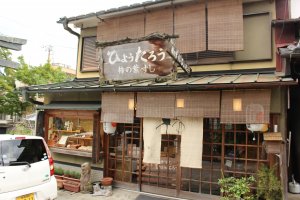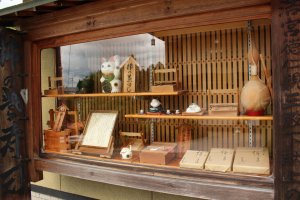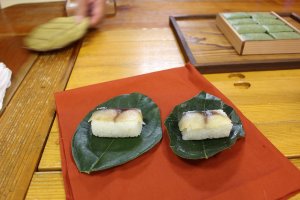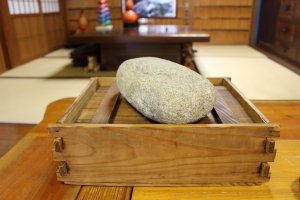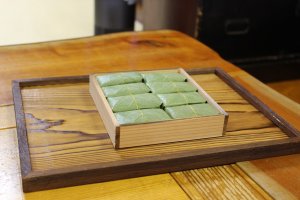“There is a reason Japan has the culture of eating raw fish in the form of sashimi and sushi,” the owner and chef of Kakinohazushi Hyotaro informed me. “Wealthy samurai and merchants who could afford to eat at a restaurant wanted to eat the best and freshest food possible. In the case of fish, that’s when it’s taken from straight off of a boat. If I as a restaurant owner then cooks that fish I am taking away the life and freshness of the fish,” explained the chef again. “Or maybe I’m hiding how long ago the fish was caught by cooking it. Serving it up raw and fresh was and still is the best way to show the customer how fresh and high quality your fish is. Those same customers still wanted to eat fresh sushi even if they were away from the sea even as far away as here in Yoshino,” the chef continued. “In order to provide that we invented kakinohazushi.”
Kakinohazushi Hyotaro is a small sushi restaurant in a historical-looking building (I can’t say whether the building has legitimate historical credit or if it’s a very authentic modern reconstruction) on the slopes of Yoshino Mountain in Yoshino-cho, Nara; a long way from the nearest ocean. There are a few tables for one to sit and eat at, but the kakinohazushi served here is best enjoyed the day after it has been prepared.
Kakinohazushi is the practice of preserving fish and rice with salt and wrapping it in a Japanese persimmon leaf (“kakinoha” in Japanese) to prevent it from spoiling on the minimum 5-day journey it once took for the sushi to go from a port in present-day Osaka to a restaurant, ryokan or estate in Yoshino. The persimmon leaf is used because of it’s anti-bacterial properties. According to Hyotaro’s chef the leaves are capable of killing between over 80-90% or so of bacteria and preventing its spread. Persimmon leaves were also used as bandages in the old days. The leaves also keep the flavor of the salts in and allow it to permeate the rice and the fish evenly, a perfect and all natural marinating container. After being salted and wrapped in the persimmon leaf the sushi is packed into a wooden box and a lid with a heavy stone is placed on top to further speed marinating and preservation of the sushi and to form it into a perfect brick-like shape. The best flavor is supposedly achieved after one day.
I was served both sushi that was a couple of hours old, and sushi that was in the one-day best flavor zone. The sushi that had been preserved for a whole day was a little saltier than the sushi that had only recently been prepared (its shape was more defined as well), but the difference in flavor was slight. Kakinohazushi is tasty and makes for a near worry-free bento, but like the samurai and wealthy merchants of old, I too prefer the fresh sushi from straight off of the boat. The flavor of fresh fish and the wider variety available (salmon and mackerel are almost the only 2 fish used to make kakinohazushi) is the best. My favorite takeaway from Kakinohazushi Hyotaro was the history lesson and the insight the chef offered me into the culture of sushi. Happy travels!



